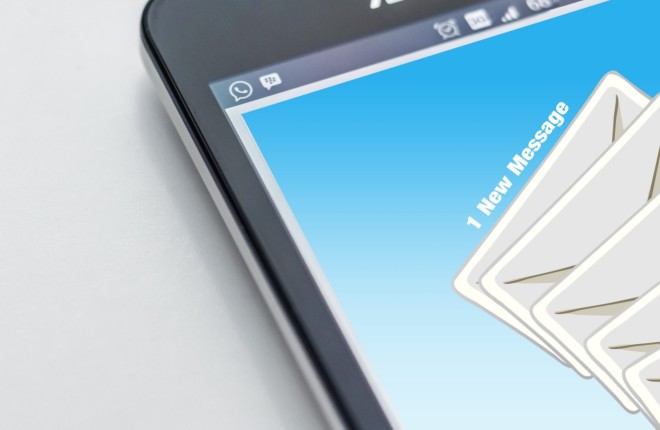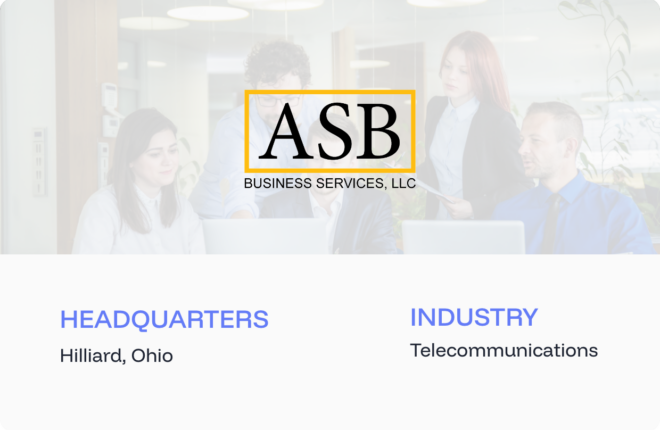What is a Sales Sequence
A sales sequence refers to a planned and deliberate series of steps taken by a salesperson to guide a prospect through the sales process and convert them into a customer. This may include sending an initial message, following up with a call, scheduling a meeting or demo, addressing objections, and closing the deal. It is designed to increase the efficiency and effectiveness of the sales process, by providing a structured approach for engaging and qualifying leads and guiding them through the decision-making process.
Sales sequencing is an effective way of removing the guesswork in a sales process and allowing your SDRs to know exactly what to do next to advance a prospect. A sales sequence can be defined as a series of different sales touchpoints scheduled to be delivered over a pre-defined time and at a set interval. These touchpoints are not limited to emails but can also include SMSs, social messages, phone calls, and other sales tasks.
The best sales sequences are the ones that strike a perfect balance between automation and personalization. Sequencing helps sales teams scale both their performance and execution, and stay top of mind with their prospects.
What are Sequencing Tools?
Sequencing tools are software or automated applications that are either built for executing sequences that involve a specific sales channel or those involving a mix of channels. For example, email sequence software can only be used for email sales campaigns. Then there are sequencing technologies that support working around different channels such as email, phone calls, LinkedIn InMail, and text messages.
History of Sales Sequencing
Sales sequencing primarily came into practice to start meaningful conversations and create demand from targeted prospects. Sources indicate that it was pioneered by Outreach, PersistIQ, and other companies around 2014. Today, sales teams consider sequences as an indispensable element of their sales development plan of action.
How Sequencing is Your Trump Card in Sales Competition
Here are some crucial benefits of using sales sequence as a standard sales tactic:· Take the complexity out of your sales process by giving it a coherent and logical structure
· Personalize your messages at scale to start more meetings and conversations with prospects
· Nurture or follow up qualified leads with highly relevant sales content or scripts
· Know which sales strategy is working for you and how to improve it
· Avoid missing follow-up and engagement activities using automated sequencing software
Best Practices for Sales Sequences
Here are four best practices to remember before putting together a sales sequencing strategy that gets results.
Target: You always begin planning your sequencing strategy by identifying and focusing on the right prospects to turn them into customers. First, your sales reps and SDRs should possess deep knowledge about your brand and the products and services you offer. Don’t skimp on training. This step is not only important for prospecting but also for closing deals later in the sales process.
Next, you need to understand who your prospects are, what they are looking for, and what their buying power is by creating detailed ICPs or buyer personas. After getting a good idea of who your ideal prospects should be, you can search for them starting from your existing and historical prospect databases. Google News, social media, professional networks, job listings, B2B data sources, and other channels can also be great sources to search for your ideal prospects, though some channels can be time-consuming.
Lastly, don’t depend on static data to qualify your prospects. Instead, make dynamic data your top priority. Mobile numbers, email addresses, office and personal addresses, job roles, and consumer needs and priorities keep changing. Therefore, your B2B database needs to be constantly updated, lest you ruin your campaigns due to decayed data. Opting for a reliable B2B data provider is always a good idea to access verified, clean, and up-to-date contact data to quickly reach out to qualified prospects.
Segment: Lead segmentation is critical to any sequence as it helps to focus on a specific class of leads, deliver more influential prospecting messages, and improve the quality of your leads. And, it better equips you to push leads down the sales funnel as you clearly understand how to nurture them at each stage. Leads can be segmented into different categories, among which demographic, location-based, technographic, sociographic, psychographic, and intent-based are the most popular ones. Don’t forget that the quality of your segmentation depends on the quality of the data you use.
Intent-based or behavioral segmentation involves segmenting leads based on the actions they take or how they interact with your brand. For example, someone downloading your eBook or appearing on the landing page you highlighted in your paid ad shows greater intent to buy your product than another person who briefly browses your home page or looks you up on Google. Behavioral segmentation includes further categorization based on purchase behavior, buyer journey phase, timing, benefits sought, online behavior, etc.
Align: The best sequences are the ones whose touchpoints are so perfectly aligned that they tell a story. Your touches should be connected and follow the same flow. At no point in the sequence should they detour or miss the direction in which the sequence was started.
For example, your sequence could be to pitch a product, aggressively prospect, turn prospects into customers, nurture prospects through the sales funnel, follow up, or achieve any other sales purpose. Every touch in your sequence should be aligned to the purpose of the sequence.
The ideal number of touches included in a sequence varies around 8-10, depending on various factors such as whether the sequence is for an inbound or outbound sales campaign, communication preference, sales cycle length, lead source, etc. It’s also important that your touches are sufficiently spaced apart (but not by too much), especially in an outbound campaign, so that your prospecting sounds (or reads) natural and your prospects don’t run away.
Mix: Using a mix of channels—email, phone, direct mail, social media message, text, voicemail, or even in-person meeting—in your sales sequence is always a great option to ensure the best outcome. It’s also a phenomenal way of avoiding customer frustration associated with the flooding of messages from salespeople. This is because each touchpoint in a sequence is spaced apart by a fair size of pre-defined time intervals so that the prospects are not flooded with sales messages.
Moreover, a brilliant mix of channels enables the salesperson to effectively use their sequence to keep engagement high and the conversation moving forward. Using the same channel to prospect or follow-up may cause prospects to lose interest in you or make your sequence less effective.
Automate and Customize Your Sales Sequences
Adopting automated sales sequences can be a powerful hack to reduce the number of hours spent on repetitive and manual sales work. Automated lead nurturing could convert 15-20% of potential customers—who aren’t ready to buy—to sales. Moreover, automation is used by 68% of businesses in some way.
For most sales sequences, customization is key to its effectiveness. If they perform as expected, customized sequences can be added to your individual best sales practices and shared across your sales department. This will improve the performance of both your sales team and your sales development game plan.
To build customized sequences, you need to have intel on what your targeted prospects are up to, what they are looking for, and whether they are qualified or ready to purchase. With SalesIntel’s Research on Demand, you can build custom contact lists, find prospects that fit your ICP, and fast-track human-verification of data.
5 Reasons You Need Reliable Data to Optimize Your Sales Sequencing Effort
1. You need to improve conversion rates by targeting the right companies
Creating a general profile of your potential customers will not help you to plan a targeted sequencing strategy. To build your ICP, you’d need authentic and accurate B2B data, especially firmographic and behavioral or intent data. It’ll help you to identify prospects who’ll deliver the best returns and are a long-term fit for your business.
On the other hand, you need intent data to easily differentiate between low and high potential leads, create targeted sequences, personalize sales messages, measure sequence performance, and forecast buying behavior.
2. Your sequencing campaign will only be as effective as the email addresses and phone numbers you have
With the rising work from home trend, you’d want to be sure that the contact data you’re using in your sequences is valid. There’s no point calling offices that have nobody there. It’s not enough to have direct dials or switchboard numbers. In a recent study conducted by ScaleX, work mobile numbers were found to be 7X more effective in reaching prospects than direct dials and other numbers.
Furthermore, you need to scale your contact database to increase the effectiveness of your sequences. Sometimes, you’ll require additional email addresses and phone numbers to reach the prospects properly.
3. You need to minimize manual prospecting for multi-channel outreach
Multi-channel outreach strategies like using a sales sequence require SDRs to exhibit quick prospecting and follow-up skills because of the fast-paced, persistent nature of outreach campaigns and the number of channels involved. With reliable data on your prospects, you can reduce the task of manual prospecting, which occupies a large SDR capacity and consumes a lot of sales time. Additionally, more time means you can reach more quality prospects to scale your sequence’s performance and execution.
4. You need enough contacts and accounts to keep your sales reps productive
If you are to achieve success with your sales sequence, you’d need quantity along with quality. We’ve talked a lot about adding quality leads to your list, but what about the number of leads? Research has shown 72% of companies with <50 new sales opportunities per month fail to reach their revenue goals compared to 15% with 51-100 new sales opportunities and 4% of companies with 101-200 new sales opportunities per month.
Increasing the number of contacts and accounts in your sequence will raise your chances of securing new sales opportunities. One of the easiest ways to do that is having access to B2B data on your best prospects.
5. You can’t properly segment prospects without reliable data
One of the secrets to the success of a sales sequence is segmentation. It’s both easy and effective to prospect using a sequence if your leads are properly segmented based on industry, company, or persona. As explained above, segmenting your prospects requires clean and high-quality data. But, there are different kinds of data you need access to so that you could do justice to your lead segmentation process.
Read About – Zoominfo Alternatives
Why SalesIntel is the Data Partner You Need to Power Your Sales Sequence
SalesIntel guarantees 95% accuracy for all of its B2B contact and company data so you can crush your sales goals with your sequences. Intent data provided through SalesIntel’s partnership with Bombora will help you to quickly identify ideal prospects you need to target with your sequences. SalesIntel offers a massive wealth of accurate B2B data, which includes 95% accurate human-verified contacts, data on 3.5 million+ companies, and 100% direct email coverage.
Moreover, SalesIntel can be easily integrated with your CRM or sequencing software, such as Outreach, that you already use. This allows you to export verified contacts from SalesIntel directly to your existing tech stack and make sequencing a whole lot easier. If you don’t find data on a particular contact you wish to include in your sequence, you can use SalesIntel’s Research on Demand feature to get your requests returned in as quickly as 2-48 hours. This will help you to build a custom prospect list for your sequence in no time.
You can also use other SalesIntel features like the free Chrome extension, RevDriver, which recently got upgraded to its newest version, to eliminate manual prospecting on LinkedIn and company websites and access ready-to-use contact data for your sequencing purpose.

What Your Ideal Sales Email Sequence Should Look Like
Using sales email sequences is a great way to automate sales emails and increase the chances of conversion. You can use free sales email templates and then customize them to compile a sequence. You should then conduct A/B testing on your email sequences to finalize the most productive one.
The following cadence should give a good idea of a sales email sequence that gets results.
Email 1: Start by congratulating your prospects
Write a congratulatory email to reach out to prospects who are in the news because of their achievement, invention, discovery, a recent interview, or anything that got them in front of the public view for good. They could also be people who are not in the limelight but have published a new article, eBook, explanatory video, podcast, or webinar and can qualify to be your prospects.
You can also use free Chrome extensions like RevDriver to easily access accurate contact and company data when prospecting across LinkedIn, product review pages, social media sites, or anywhere on the Internet.
Congratulating your prospects is a good way to start a conversation without sounding like a salesperson. At the end of your congratulatory email, you can inform the prospect about your brand or solutions relevant to them or the work you congratulated them for. You can also invite them to a quick meeting or call for further information on your brand or the solutions you talked about.
Email 2: Offer a free solution that helps
If freebies are expensive then consider sending useful content, maybe an eBook, an educational PDF, or a consumer survey to your prospects along with your follow-up email. Make sure your content is highly personalized and adds value to the reader.
With freebies, the job becomes easier. You can ask prospects to use your free solution (that’s relevant to them) to assess their business health, predict demand, know buying trends, or anything that truly benefits their business. If your prospects want to learn more about your free tool or other solutions, they will reply to you to discuss further.
For example, SalesIntel offers a free integration to quickly search for contacts on a professional networking site and even across the web. If users enjoy their experience with this free integration, they’d most likely check out other SalesIntel integrations and wouldn’t mind paying.
Let at least 24 hours pass before you shoot the second email.
Email 3: Follow up the next day if they don’t reply
Keeping the same 24-hour rule in mind, send the third email to your prospects to get their pulse. You can follow up with a reiteration of your personalized solutions that can help improve their sales, better manage their workflows, or anything that will create a response from them.
To make it sound natural and non-promotional, you can use phrases like ‘I understand your busy schedule,’ ‘I wish we could connect earlier,’ ‘I have something more valuable for you,’ or ‘Let me explain to you how we can remove the roadblocks on your path to becoming a top player.’
Email 4: Tell them this is your last follow-up
This could sound a bit stern but can push the reader to give you a second thought before saying no. Nobody wants to regret a choice after ignoring something that could’ve added value to their business. Besides, the reader may want to have a quick look at your solutions before deciding to say yes or no, knowing that they would not hear from you again.
Test and measure your sales email sequence performance to make necessary adjustments to ensure the best outcomes. Open and click rates against total sends, replies, and engagement rates are among the top measurements to look at when assessing the performance of your sales email sequences.
Q.1 What are the key elements of a successful sales sequence?
Ans. – The key elements of a successful sales sequence are:
- clear and compelling messaging
- a strong call-to-action
- effective targeting and segmentation
- personalization
- rapport building
- handling objections
- closing the sale.
Q. 2 How can I personalize my sales sequence?
Ans. – To personalize your sales sequence, you can research and gather information about your potential customer, such as their industry, company size, pain points, and goals. This will allow you to tailor your messaging and approach to align with their specific needs and interests.
Q.3 How do I effectively handle objections in a sales sequence?
Ans. – To effectively handle objections in a sales sequence, you should be prepared to anticipate and address common objections, such as price, competitors, and features. You should also actively listen to and address the specific concerns of your potential customer, and provide clear and compelling counterarguments or solutions.
Q.4 How can I use data to improve my sales sequences?
Ans. – You can use data to improve your sales sequences by tracking metrics such as open and response rates, conversion rates, and customer feedback. Analyzing this data can help you to identify areas for improvement, such as which messaging resonates the most, or which steps in the sequence need adjustments.
Q. 5 How can I build rapport during a sales sequence?
Ans. – Building rapport during a sales sequence can be done by:
- showing interest in the customer’s business and industry
- asking open-ended questions
- sharing similar interests or experiences
- being genuinely friendly and personable.
Q. 6 How can I effectively close a sale during a sales sequence?
Ans. – To effectively close a sale during a sales sequence, you should clearly communicate the value and benefits of your product or service, address any remaining objections, and provide a strong and specific call-to-action. Also, you could use closing techniques such as assumptive or trial closes, or using emotional appeals like scarcity to give customer a sense of urgency to take action.





